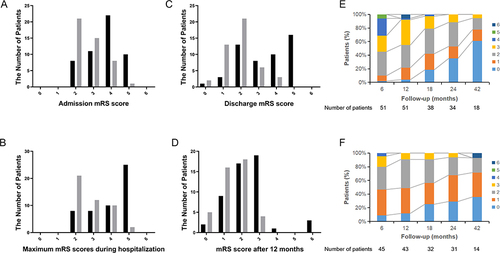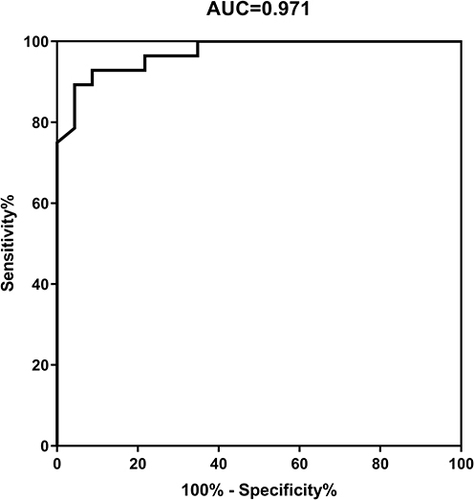Figures & data
Table 1 The Clinical Manifestation and Incidence of Disturbance of Consciousness
Table 2 The Clinical Characteristics of Patients with or Without Disturbance of Consciousness
Figure 1 The mRS among anti-NMDAR encephalitis patients with or without disturbance of consciousness. The median of the mRS scores at admission, maximum mRS scores during hospitalization, mRS scores at discharge, and mRS scores 12 months after discharge in the group with disturbance of consciousness were significantly higher than that in the group without disturbance of consciousness (all P<0.001). The long-term follow-up mRS scores were not statistically different between the two groups (P>0.05). (A) The mRS scores at admission. (B) The maximum mRS scores during hospitalization. (C) The mRS scores at discharge. (D) The mRS scores after 12 months. The mRS scores at different follow-up points are shown in (E) for patients with disturbance of consciousness and (F) for patients without disturbance of consciousness.

Table 3 Predictors of Poor Neurologic Outcome (mRS>2) in Anti-NMDAR Encephalitis Patients with Disturbance of Consciousness at the 12-Month Follow-Up
Table 4 Factors Associated with Prognosis in Anti-NMDAR Encephalitis Patients with Disturbance of Consciousness
Figure 2 Receiver operating characteristic (ROC) curve for predicting the value of mechanical ventilation, elevated IgG index and the time from onset to the initiation of immunotherapy for evaluating the prognosis of patients with NMDAR encephalitis with disturbance of consciousness.

